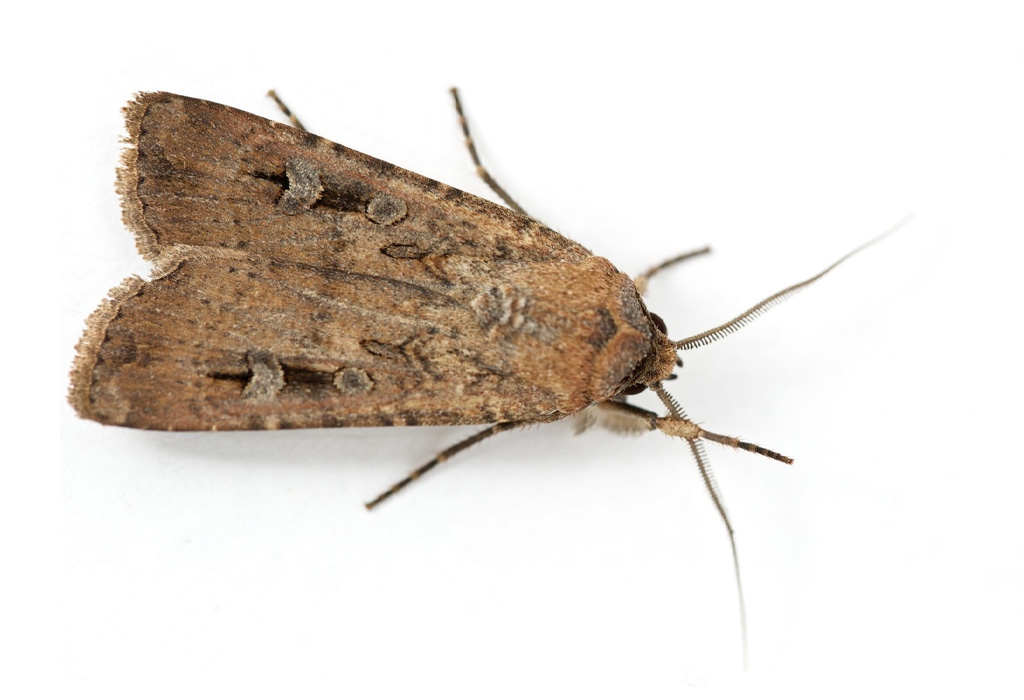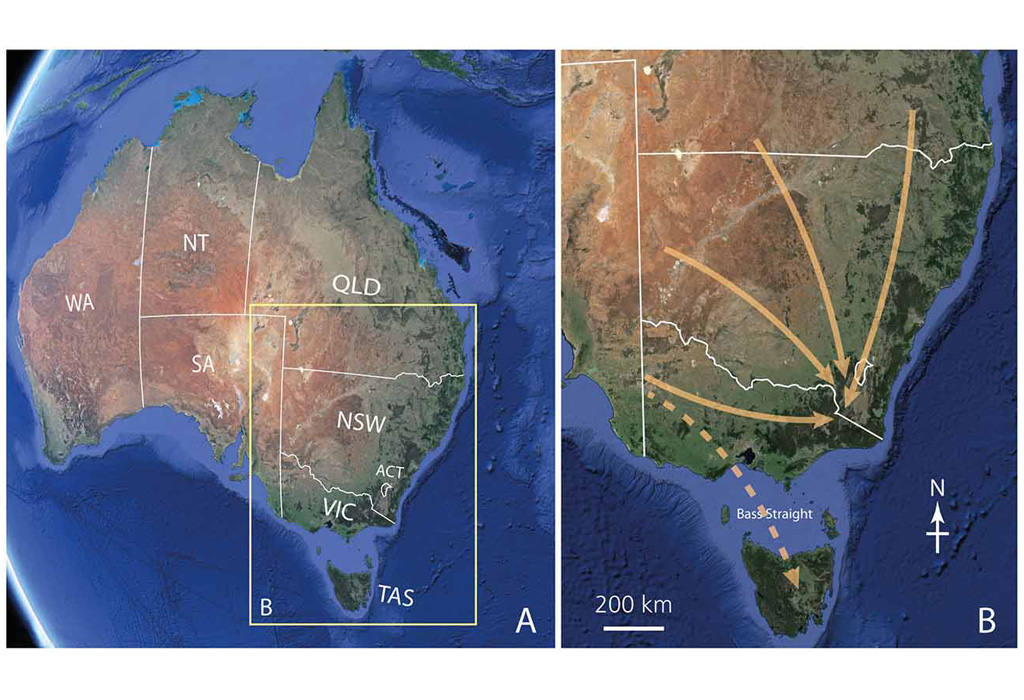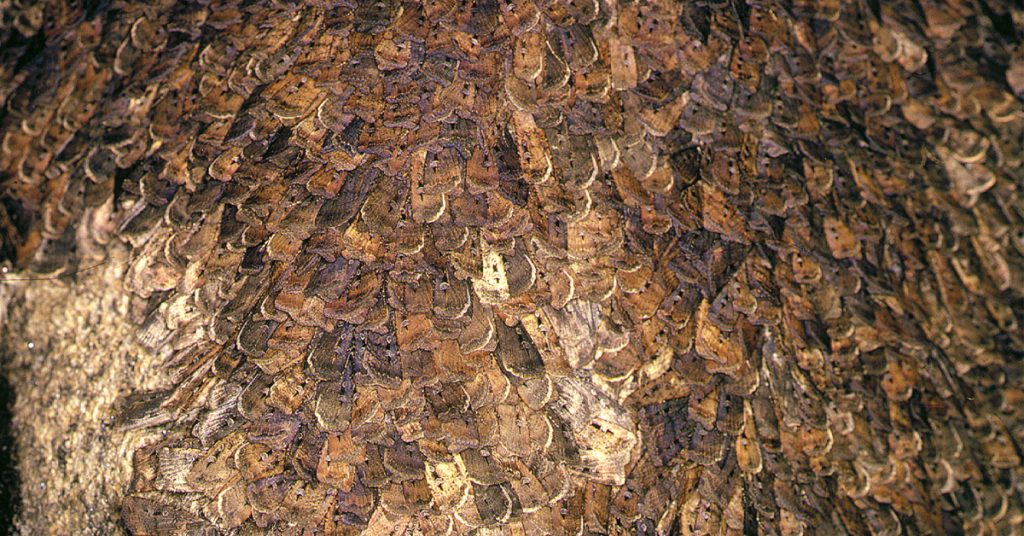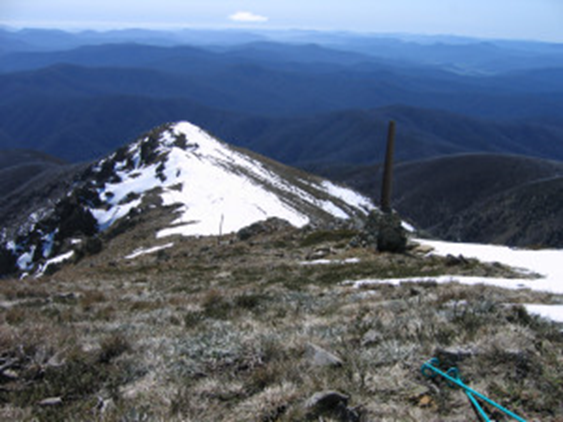BOGONG MOTH
Agrotis infusa
Vulnerable

The bogong moth is a temperate species of night-flying moth, notable for its biannual long-distance seasonal migrations towards and from the Australian Alps, similar to the diurnal monarch butterfly. During the autumn and winter it is found in southern Queensland, western New South Wales, western Victoria, and also in South and Western Australia. Adult bogong moths breed and larvae hatch during this period, consuming winter pasture plants during their growth.[3] During the spring, the moths migrate south or east and reside in mountains such as Mount Bogong, where they gregariously aestivate over the summer until their return towards breeding grounds again in the autumn.

The moth’s name, bogong, is derived from an Australian Aboriginal language; the Dhudhuroa word bugung describes the brown colouration of the moth. It is an icon of Australian wildlife due to its historical role as an important food source and because Aboriginal peoples would come to where the moths spend the summer to feast on them and hold intertribal gatherings. In recent years, it has become well known for its accidental invasion of major cities like Canberra, Melbourne, and Sydney due to strong winds during its spring migration.

This impressive mountain towers above the Valley of the Kiewa River and was of great significance to local traditional owner groups. As noted by Parks Victoria, “Many Aboriginal people have a remarkably rich history of Aboriginal use in the Victorian Alps and a vast knowledge of the cultural sites, oral history and ancestral stories that relate to the alpine region of Victoria. Throughout the many seasons each year, Aboriginal groups would come from as far away as the coast and south west slopes, to meet with the tribes of the mountains for intertribal ceremonies and feasting on Bogong Moths. During these festivities they would exchange cultural objects and materials for tools”.

In the Waywurru and Dhudhuroa languages, the mount Bogong is named Warkwoolowler, meaning the mountain where Aboriginal people collected the Bogong Moths. (source).
According to Indigenous historian Eddie Kneebone, “the Yiatmathong (people) controlled the Kiewa and Mitta Mitta Valleys, they also had control of the Alpine region on the Victorian side. Their southern most boundary extended to Hotham and ran along the highest ridge line of the Alps in an east-west direction. Because Mt Bogong fell within the Yiatmathong territory, permission had to be gained from them by the other tribes participating in the summer feast. Once this was done, the tribes would spend summer in the cooler climate of the mountains feasting on the protein rich Bogong moth”.(‘[1]‘,)
According to Kneebone, prior to climbing Mount Bogong and the Bogong High Plains, the tribes would gather by the Murray River at Mungabarreena (near modern Albury). After ceremonies, initiations, marriages, trading, settling of disputes, and renewing of alliances and friendships, the groups would walk from Albury to the mountain region to feed on the protein-rich Bogong Moths [2].
Following European settlement, Indigenous groups were decimated and survivors were placed onto settlements, often far from the traditional lands. Indigenous visitation to Mount Bogong is generally understood to have finished by the mid 19th century. While there was cattle grazing for some time, it was the walkers and then skiers who became the next group to visit the mountain in large numbers.